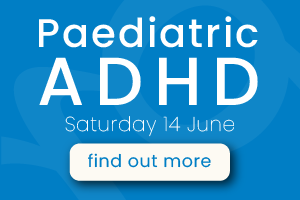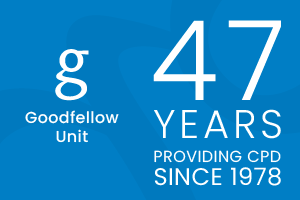Main webinar video, with John Kolbe and Nicola Corna
Nicola Corna - Inhaler best practice
Asthma and COPD result in significant respiratory burden for a number of New Zealanders – particularly within Māori and Pacific communities. One of the mainstays of treatment for these respiratory diseases is the use of inhalers to control and maintain adequate airway function. However, many patients are missing out on appropriate treatment and basic training on how to use their inhalers correctly, contributing to poor disease control, increased severity of symptoms and hospitalisations.
Resources
- Inhaler devices Health Navigator NZ
- Inhaler use Health Navigator NZ
- Inhaler chart Counties Manukau Health
Q&A - additional questions answered after the webinar
1. Any comments on using Vannair, SMART-style, for patients who prefer MDIs to turbuhalers? (JK) Should be applicable for both SMART and SIT as contains the same LABA plus ICS. (NC) The formulation of Vannair 200/6 and Symbicort 200/6 are the same with the mode of delivery different ie MDI vs turbohaler. In my practice I don’t perceive it as a problem and refer to Professor Richard Beasley’s research about this.
2. How often would you do spirometry in terms of their place in the management in both COPD or in asthma. (JK) For COPD, I use spirometry for diagnosis. For those with moderate/severe COPD I assess response to interventions by changes in exercise capacity(as explained in the session). There can be a change in exercise capacity without change in spirometric volumes . This is related changes to pulmonary mechanics (Woolcock-Reid phenomenon) and relates to reduction in gas trapping. For asthma I measure spirometric volumes at every visit. However once diagnosis is made, you can use peak flow to monitor progress in individual patients. (NC) I tend to do spiro with my initial assessment, then subsequently as part of assessing treatment progress
3. I’m not sure that a patient who is hard of hearing should not use a turbuhaler, you can feel the click as well as hear it. (JK) Agree. (NC) Some people can but most can’t, it comes down to how the patient feels they can manage the device that guides device choice.
4. When a patient breathes out through the smaller spacer on the right, does the air go back in to the inhaler? - when giving salbutamol to a patient, does the inhaler get contaminated or is it ok to reuse the same salbuatmol inhaler for different patients (NC) There is a valve on the spacer that closes with expiration so air doesn’t go back into the spacer and therefore doesn’t go back into the inhaler either.
5. Any advantage using QVAR (ie fine particles) over other ICS device? (JK) Because of the fine particles, may get better lung deposition and thus more effective. However, this may be offset by the fact that should not be used with spacer. (NC) Great question – I’m a fan of Qvar and as you pointed out in your question, it has finer particles and penetrates into smaller airways than any other ICS on the market. Yes, I do see definite patient benefits with using Qvar in my clinical practice, but again as a clinician, you have to balance what you want with to prescribe with what the patient is actually going to use. No medication helps unless the patient uses it.
6. If LAMAs are so good in first line, why do most require special authorities that stipulate SAMA first? (JK) No idea! It is clear that LAMAs are more effective than SAMAs and thus some patients who don’t respond to SAMAs may respond to LAMAS. NC That’s a question for PHARMAC - but you can do a trial of Atrovent that is just a few weeks long and see if the patient derives any benefit.
7. Why does a LABA increasing rest heart rate? And hence why I do not want to give up ventolin because of increased hr in SIT. (JK ) What probably needs to be considered is the total B agonist burden. With the addition of an ICS with SIT, asthma control is improved and should require less B agonists. (NC) All beta agonists – both SABA and LABA’s have increased heart rate as a potential side effect as beta receptors are present in cardiac smooth muscle. If the patients asthma is well controlled, they will only need their SIT at a dose of 1-2 puffs bd and will rarely require extra puffs. I would be examining the other factors that add to poor asthma control and address those with the patient. The patient could also be very sensitive to beta agonists – again – optimising asthma control is key to reducing beta agonist use by ensuring adherence with ICS use, address lifestyle factors and other comorbidities.
8. Advice re health workers with asthma and exacerbations requiring steroids. (JK) Not sure of question. If it relates to treatment of AEs during the current Covid-19 situation, these need to be treated on their merits – with oral CS if considered indicated. However all exacerbations should be regarded as presumptive Covid infections. Nebulised therapy is to be avoided.
9. Any tips for motivating patient to take correctly? Have counselled a patient many times by different practitioners as she is overusing LAMA/LABA and ICS but keeps overusing . (JK)Very difficult problem. No real advice except keep “chipping away”. Useful to clarify what patient considers to be asthma symptoms. In a study we did some time ago, patients regarded a wide variety of symptoms as being due to asthma and this led to overuse. (NC) That is a tricky situation –It starts with gaining someone’s trust, looking at diagnosis to make sure that this is correct e.g. if they have undiagnosed bronchiectasis or paradoxical vocal cord motion disorder, disordered breathing , anxiety disorders etc these need to be fully treated and easily coexist with COPD and asthma and complicate the management of these. I suggest setting small goals with frequent contact with the patient. As a clinician you have the bigger picture, but the patient is only concerned with getting through the next few minutes. Referral to a pulmonary rehabilitation in your area would be hugely beneficial to the patient, as many of the underlying issues can be worked through during the course of the program.
10. What was the reasoning behind leaving the e chamber to air dry, rather than using the tea towel? (NC) The echamber is made of static free material so can be cleaned and doesn’t need to airdry. The directions suggest this and I presume that this is simply to standardise directions around spacers to reduce patient confusion
11. Does"0" mean there are no puffs left (NC) yes
12. How do you get around the dose counter only going to 30 days on a 31 day month. (NC) Just tell the patient it has 30 doses. Most patients don’t take inhalers based on a calendar month.
13. Why do the patients need to breathe out then inhale the medication? Sorry if its a silly question. (NC) Breathing out first i.e. emptying the lungs, increases the amount of air/medication taken into the lungs.
14. Should 'SIT' be done for all mild asthma or just poorly controlled mild asthma? (NC) SIT has been shown to improve asthma control so use it with both and you should see control improve.
15. Combivent has replaced Duovent inhaler. (NC) Yes – prescribing by generic name eliminates brand confusion
16. Handihalers are being discontinued. (JK) only Respimat now
17. Do various devices come with instruction on how to use (NC) Yes they do and each brand also has videos on their websites. Health navigator has demonstration videos, and I will be posting one through Good fellow too.
18. Any thoughts about IV Hydrocortisone in background of COVID. (JK) See response to #8.
19. "One or 2 patients love nebulisers any comments? My concern is overuse of Saba sama with Lama (JK) Agree. I try to avoid regular use of nebulised therapy in both asthma and COPD.
20. Would nebuliser saline help placebo? (JK) Nebulised hypertonic saline helps clearance of secretions/improves muco-ciliary clearance by altering the physical properties of those secretions – and the effect relates to the concentration/tonicity of the saline. In studies of hypertonic saline, normal saline is used as the comparator on the assumption that it has no effect on muco-ciliary clearance. Not clear if that is the case. Certainly, some patients claim symptomatic improvement ?? through hydration of secretions. However hypertonic saline causes airway narrowing in those with airway hyper-responsiveness – hence its use as a provocation test. May cause causes airway narrowing even despite prior treatment with SABA. The preparation of HTS available in NZ is 7%. If patient unable to tolerate, it is worth trying lower concentration. For example, diluting with equal volume of sterile water to produce 3.5%. (NC) any patient who could read would pick up the difference immediately
21. Where could I send second opinion request for a spirometry reading . (JK)The first consideration is whether it is a technically adequate test. While any respiratory physician would provide a report, they may be reluctant to do so unless they were certain about the technical adequacy of the test. Many modern spirometers produce an automated report. (NC) perhaps your local hospital with a respiratory physician or lung function lab/ physiologist could arrange this?
22. Given that it is often difficult to assess the efficacy of inhaled corticosteroids is it useful to trial oral steroids first to assess if there is a response? (JK) In asthma, I think this is appropriate as there are situations when may get response to oral but not inhaled CS. Also, the time course is shorter with oral CS ie you get an answer quicker and the answer may be more definitive. Also, may take the view that by initial use of oral CS optimise airway calibre and then try to maintain that calibre with ICS. (NC) No, oral corticosteroids provide a systemic effect and inhaled steroid local effect in the lungs.
Presenter

Nicola Corna
I have worked as part of the respiratory team at Counties Manukau District Health Board for almost 20 years, achieving Nurse practitioner in 2019. I practice in primary, community and secondary care settings across the entire Counties Manukau District Health Board (CMDHB) area improving access to expert respiratory services. My work includes screening, assessing and diagnosing people with chronic respiratory and related conditions, prescribing and managing treatment and follow up. A broader goal is to improve health outcomes in the community by teaching and working collaboratively with primary care providers and other local health services. I am involved in and have been involved with working groups at local, regional and national level developing NZ specific guidelines for the management of respiratory conditions.
Presenter

Dr John Kolbe
John is a respiratory physician at Auckland City Hospital and Professor of Medicine, Department of Medicine, Faculty of Medical and Health Sciences, University of Auckland.
Previous roles have included President of the Thoracic Society of Australia and New Zealand, President, The Royal Australasian College of Physicians (2010-2012).
He is currently the President–elect of the International Society of Internal Medicine. His recent research interests include asthma, COPD, bronchiectasis, cystic fibrosis and lung cancer.


